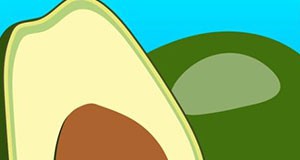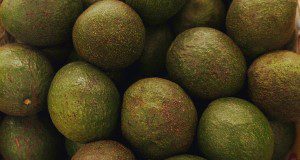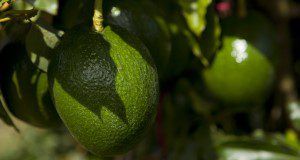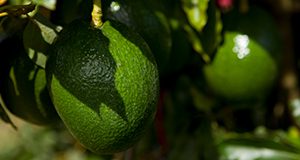Laurel wilt (LW) is a vascular disease caused by a fungal pathogen transmitted to avocado trees by several ambrosia beetle species and through root grafts among adjacent avocado trees. A critical part of preventing and controlling plant diseases is determining the causal agent so that the appropriate management practices can be implemented to eradicate or contain the outbreak. Proper sampling is a critical step in disease diagnosis and in the determination of the causal agent of disease. This new 3-page publication of the UF/IFAS Horticultural Sciences Department was written by Jonathan Crane, Romina Gazis, Jeff Wasielewski, Daniel Carrillo, Bruce Schaffer, Fredy Ballen, and Edward Evans.
https://edis.ifas.ufl.edu/hs1394
Tag: Avocado
Recomendaciones para el Control y Mitigación de la Marchitez del Laurel y sus Vectores, los Escarabajos Ambrosia, en Arboledas Comerciales de Aguacate en Florida
This is the Spanish translation of Recommendations for Control and Mitigation of Laurel Wilt and Ambrosia Beetle Vectors in Commercial Avocado Groves in Florida (HS1360). Laurel wilt and the ambrosia beetle vectors that transmit this lethal disease have and will continue to affect avocado production in Florida. At least 50% of the commercial producers are Hispanic Americans and some are more comfortable with publications in Spanish. The translator, Rubén Regalado, and reviewer, Carlos Balerdi, are both previous employees of UF/IFAS.
https://edis.ifas.ufl.edu/hs1379
Recommendations for Control and Mitigation of Laurel Wilt and Ambrosia Beetle Vectors in Commercial Avocado Groves in Florida
The lethal laurel wilt epidemic affecting avocado trees in Florida is caused by a fungal pathogen-ambrosia beetle complex (LW-AB). The death of over 120,000 commercial avocado trees in Florida may be attributed to LW-AB. Recommendations for control and mitigation of this epidemic are needed to guide commercial producers in their decision-making process. This new 8-page publication of the UF/IFAS Horticultural Sciences Department outlines the LW-AB epidemic, provides information on the pathogen and ambrosia beetle vectors, provides a brief outline of current research findings, and offers recommendations for the control and mitigation of LW-AB. Written by Jonathan H. Crane, Daniel Carrillo, Edward A. Evans, Romina Gazis, Bruce Schaffer, Fredy Ballen, and Jeff Wasielewski.
https://edis.ifas.ufl.edu/hs1360
Recommendations for the Detection and Mitigation of Laurel Wilt Disease in Avocado and Related Tree Species in the Home Landscape
Avocado trees are a popular choice for homeowners in Florida, with over 600,000 growing in Florida home landscapes. However, avocado trees as well as others in the Lauraceae family are susceptible to laurel wilt disease, which can kill a tree in as few as three weeks. This new 7-page publication of the UF/IFAS Horticultural Sciences Department provides home owners recommendations for identifying and mitigating laurel wilt disease in the home landscape. Written by Jonathan H. Crane, Jeff Wasielewski, Daniel Carrillo, Romina Gazis, Bruce Schaffer, Fredy Ballen, and Edwards Evans.
https://edis.ifas.ufl.edu/hs1358
South Florida Tropicals: Avocado
This 4-page fact sheet is a major revision that discusses the background, availability, selection, ripening, storage, uses, yield, nutritive value, and basic, safe preparation of the avocado. The document also contains several avocado-based recipes. Written by Linda B. Bobroff and Amy Simonne, and published by the UF/IFAS Department of Family, Youth and Community Sciences, revised January 2018.
http://edis.ifas.ufl.edu/he606
Ejemplo Ilustrativo de los Costos y Rentabilidad de la Produccion de Aguacates en el Estado de la Florida

Los cultivos de árboles frutales son de gran importancia económica en la agricultura del estado de la Florida; en este segmento, la industria del aguacate ocupa el segundo reglón económico tras los cítricos. Aproximadamente el 80 por ciento de la cosecha se vende fuera del estado; por lo tanto, la industria aporta una cantidad considerable de “dólares nuevos” al estado, lo que resulta en un impacto económico total de cerca de $100 millones por año. Este artículo proporciona una estimación de los costos y rendimientos asociados a la producción de aguacate en el Condado de Miami-Dade y un breve análisis de la rentabilidad de la industria.
Written by Edward A. Evans and Ingrid Bernal Lozano, published by the UF Department of Food and Resource Economics in December 2014, and translated into Spanish in November 2015. The English version, titled Sample “Avocado Production Costs and Profitability Analysis for Florida,” is available at http://edis.ifas.ufl.edu/fe837. (UF/IFAS Photo by Tyler Jones).
http://edis.ifas.ufl.edu/fe970
SmartIrrigation Avocado App: A Step-by-Step Guide
 UF’s SmartIrrigation Avocado for iOS and Android platforms provides a simple ET-based method to schedule irrigation and is expected to provide 20% to 50% water savings based on findings with other schedule tools. This 6-page fact sheet provides configuration instructions and main menu features. Written by D. Mbabazi, K. W. Migliaccio, J. H. Crane, J. H. Debastiani Andreis, C. Fraisse, L. Zotarelli, and K. T. Morgan, and published by the UF Department of Agricultural and Biological Engineering, May 2015.
UF’s SmartIrrigation Avocado for iOS and Android platforms provides a simple ET-based method to schedule irrigation and is expected to provide 20% to 50% water savings based on findings with other schedule tools. This 6-page fact sheet provides configuration instructions and main menu features. Written by D. Mbabazi, K. W. Migliaccio, J. H. Crane, J. H. Debastiani Andreis, C. Fraisse, L. Zotarelli, and K. T. Morgan, and published by the UF Department of Agricultural and Biological Engineering, May 2015.
http://edis.ifas.ufl.edu/ae513
Establishment Cost of Avocados in South Florida
 A major concern for the future of the Florida avocado industry is laurel wilt disease (LW), which is caused by fungus transmitted by the ambrosia beetle. Cost-effective management of LW relies heavily on the early detection and destruction of affected trees (sanitation). While not an official recommendation, some suggest that since the beetles are less attracted to younger trees, growers might consider leaving the young orchards in production while replanting only older and less productive orchards. Since the long-term survival of the Florida avocado industry may ultimately depend on a combination of eradication, prophylactic treatment, and replanting the trees, the purpose of this article is to provide an updated guidance on the costs of establishing an avocado orchard. Information presented in this study is based on interviews with growers, orchard service companies, extension agents, and other industry personnel. It is intended as a guide only to make production decisions, prepare budgets, and investigate insurance options. A follow-up document to this one will focus on the cost and return of maintaining an orchard after it has been established. This 9-page fact sheet was written by Braulia De Oleo, Edward A. Evans, and Jonathan H. Crane, and published by the UF Department of Food and Resource Economics, October 2014.
A major concern for the future of the Florida avocado industry is laurel wilt disease (LW), which is caused by fungus transmitted by the ambrosia beetle. Cost-effective management of LW relies heavily on the early detection and destruction of affected trees (sanitation). While not an official recommendation, some suggest that since the beetles are less attracted to younger trees, growers might consider leaving the young orchards in production while replanting only older and less productive orchards. Since the long-term survival of the Florida avocado industry may ultimately depend on a combination of eradication, prophylactic treatment, and replanting the trees, the purpose of this article is to provide an updated guidance on the costs of establishing an avocado orchard. Information presented in this study is based on interviews with growers, orchard service companies, extension agents, and other industry personnel. It is intended as a guide only to make production decisions, prepare budgets, and investigate insurance options. A follow-up document to this one will focus on the cost and return of maintaining an orchard after it has been established. This 9-page fact sheet was written by Braulia De Oleo, Edward A. Evans, and Jonathan H. Crane, and published by the UF Department of Food and Resource Economics, October 2014.
http://edis.ifas.ufl.edu/fe956
FE837 Sample Avocado Production Costs and Profitability Analysis for Florida
FE837, a 4-page illustrated fact sheet by Edward A. Evans and Sikavas Nalampang, provides an estimate of the costs and returns associated with avocado production in Miami-Dade County and a brief analysis of the profitability of the industry. Includes references. Published by the UF Department of Food and Resource Economics, June 2010.
http://edis.ifas.ufl.edu/fe837
FE825 Estimates of the Replacement Costs of Commercial and Backyard Avocado Trees in South Florida
FE825, a 4-page article by Edward A. Evans and Jonathan H. Crane, estimates how much it would cost to replace all commercial and residential backyard avocado trees in Miami-Dade, Broward, Palm Beach, and Lee Counties, in light of the recent discovery of the redbay-laurel wilt disease complex, which can destroy both commercial and backyard avocado trees. Includes references. Published by the UF Department of Food and Resource Economics, December 2009.
http://edis.ifas.ufl.edu/FE825



